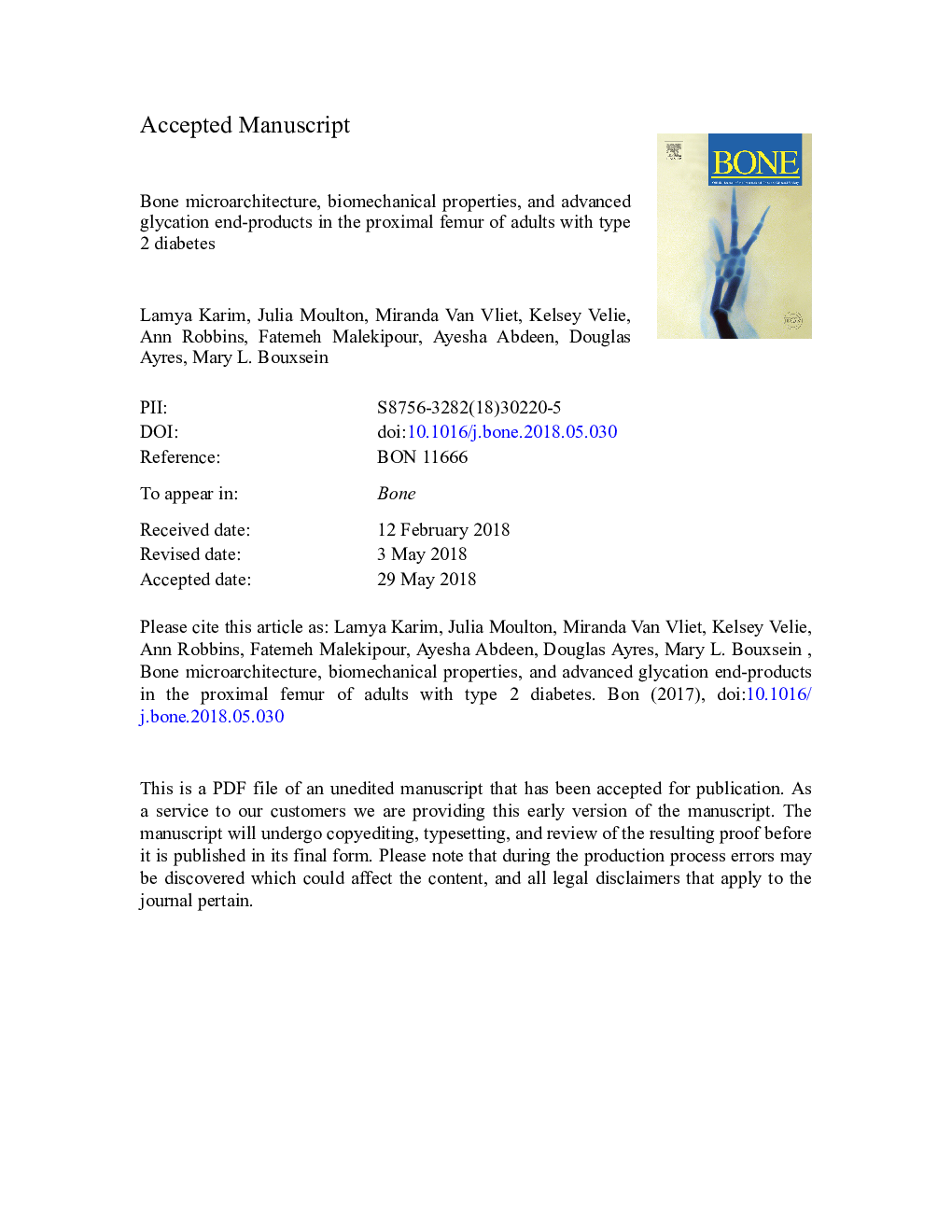| کد مقاله | کد نشریه | سال انتشار | مقاله انگلیسی | نسخه تمام متن |
|---|---|---|---|---|
| 8624776 | 1568105 | 2018 | 22 صفحه PDF | دانلود رایگان |
عنوان انگلیسی مقاله ISI
Bone microarchitecture, biomechanical properties, and advanced glycation end-products in the proximal femur of adults with type 2 diabetes
ترجمه فارسی عنوان
میکروسکوپیک استخوان، خواص بیومکانیک و محصولات پیشرفته گلیساسیون در پروگزیمال فک بالا بزرگسالان مبتلا به دیابت نوع 2
دانلود مقاله + سفارش ترجمه
دانلود مقاله ISI انگلیسی
رایگان برای ایرانیان
کلمات کلیدی
موضوعات مرتبط
علوم زیستی و بیوفناوری
بیوشیمی، ژنتیک و زیست شناسی مولکولی
زیست شناسی تکاملی
چکیده انگلیسی
Skeletal fragility is a major complication of type 2 diabetes mellitus (T2D), but there is a poor understanding of mechanisms underlying T2D skeletal fragility. The increased fracture risk has been suggested to result from deteriorated bone microarchitecture or poor bone quality due to accumulation of advanced glycation end-products (AGEs). We conducted a clinical study to determine whether: 1) bone microarchitecture, AGEs, and bone biomechanical properties are altered in T2D bone, 2) bone AGEs are related to bone biomechanical properties, and 3) serum AGE levels reflect those in bone. To do so, we collected serum and proximal femur specimens from T2D (nâ¯=â¯20) and non-diabetic (nâ¯=â¯33) subjects undergoing total hip replacement surgery. A section from the femoral neck was imaged by microcomputed tomography (microCT), tested by cyclic reference point indentation, and quantified for AGE content. A trabecular core taken from the femoral head was imaged by microCT and subjected to uniaxial unconfined compression tests. T2D subjects had greater HbA1c (+23%, pâ¯â¤â¯0.0001), but no difference in cortical tissue mineral density, cortical porosity, or trabecular microarchitecture compared to non-diabetics. Cyclic reference point indentation revealed that creep indentation distance (+18%, pâ¯â¤â¯0.05) and indentation distance increase (+20%, pâ¯â¤â¯0.05) were greater in cortical bone from T2D than in non-diabetics, but no other indentation variables differed. Trabecular bone mechanical properties were similar in both groups, except for yield stress, which tended to be lower in T2D than in non-diabetics. Neither serum pentosidine nor serum total AGEs were different between groups. Cortical, but not trabecular, bone AGEs tended to be higher in T2D subjects (21%, pâ¯=â¯0.09). Serum AGEs and pentosidine were positively correlated with cortical and trabecular bone AGEs. Our study presents new data on biomechanical properties and AGEs in adults with T2D, which are needed to better understand mechanisms contributing to diabetic skeletal fragility.
ناشر
Database: Elsevier - ScienceDirect (ساینس دایرکت)
Journal: Bone - Volume 114, September 2018, Pages 32-39
Journal: Bone - Volume 114, September 2018, Pages 32-39
نویسندگان
Lamya Karim, Julia Moulton, Miranda Van Vliet, Kelsey Velie, Ann Robbins, Fatemeh Malekipour, Ayesha Abdeen, Douglas Ayres, Mary L. Bouxsein,
